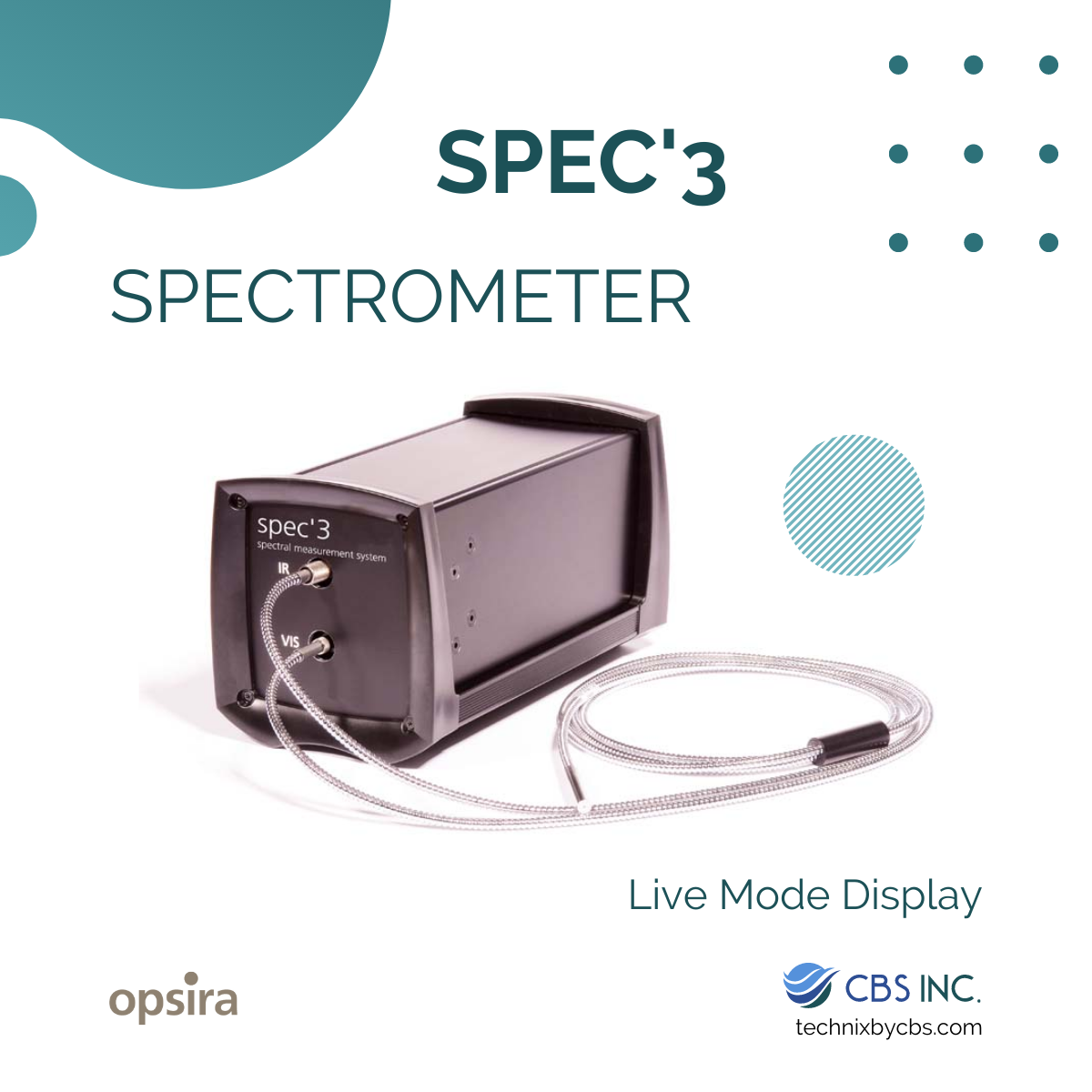SPECTROMETERS & RADIOMETERS
spr'3 - spectroradiometer
The spr'3 system streamlines speedy and easy measurement of spectral power distributions and their corresponding illuminance and irradiance. The spec software package simplifies the evaluation and processing of a comprehensive range of current colorimetric parameters. This measurement system features an array spectrometer with high wavelength resolution and incorporates an electromechanical shutter and filter wheel function, facilitating adjustments to weighting functions or measurement areas as required. It is complemented by a top-tier radiometer with high measurement dynamic. Depending on the application, detectors are available for the visible region (VIS), near-infrared (NIR), and UV.
The spr'3 system exhibits excellent linearity over a wide range of magnitudes, and temperature-induced inaccuracies are nearly eradicated through temperature corrections, ensuring precise measurements. With a wide selection of spectral regions available depending on the application, the spectroradiometer system spr'3 is ideally suited for applications within the visible spectral region, spanning from 360 to 830 nm, and for measuring spectral UV or IR irradiance. Its integrated USB interface offers effortless and direct connectivity, eliminating the need for external analysis units.
Measurements:
- Illuminance
- Irradiance
- Luminous intensity
- Radiant intensity
- Spectral power distribution
spec'3 - spectrometer
spec'3 spectral measurement system offers a versatile range, enabling the measurement of spectral distributions spanning from UV to NIR. In the visible spectral region, the spec software package provides direct displays of colorimetric values, adhering to CIE standards. A continuous live mode display further allows for real-time observations and adjustments, offering immediate insights into color rendering values, which are updated continuously. Spec'3 enables the easy definition of color tolerance, aligning with test specifications. The system is stabilized through automated adjustments of integration time and an integrated automatic shutter for dark correction, ensuring optimal operational conditions and maximal digitalization depth. Beyond this, spec'3 accommodates measurements of emission, reflection, or transmission characteristics, providing a comprehensive spectrum of capabilities. The spec’remote add-on provides a powerful TCP/IP interface for the integration of the spectrometer into any test environment.
Measurements:
- Spectral distribution
- Chromaticity coordinates / temperature
- Dominant wavelength
- Material reflection / transmission
Discover and explore our comprehensive catalog !


What are Spectrometers and Radiometers?
Spectrometers and radiometers are instrumental tools used in the field of optics and light measurement to analyze and quantify different aspects of electromagnetic radiation.
A spectrometer is a scientific instrument utilized to separate and measure spectral components of a physical phenomenon. Its objective is to gauge the interaction of electromagnetic radiation with a sample, encompassing absorption, reflection, or scattering, or the emission of electromagnetic radiation from a sample, including fluorescence, phosphorescence, or electroluminescence. This is achieved by dispersing light into its constituent wavelengths using prisms or diffraction gratings, followed by the detection and recording of the intensity of each wavelength using a photomultiplier tube or a charge-coupled device (CCD). Spectrometers find widespread application across diverse fields such as chemistry, physics, environmental science, and astronomy. They serve various purposes including identifying chemical compounds, analyzing material composition, investigating the properties of celestial objects, and monitoring environmental pollutants.
Radiometers are instrumental devices utilized for measuring the flux or power of electromagnetic radiation within specific wavelength or frequency ranges. They serve to quantify radiant energy emitted, transmitted, or reflected by objects or surfaces, typically featuring sensors that absorb radiation and convert it into an electrical signal. These signals are then calibrated to provide precise measurements of radiant flux. Radiometers find extensive applications across diverse fields including remote sensing, climate research, meteorology, solar energy studies, and optical communications, where accurate measurement of radiant energy is essential for comprehending natural and technological processes. Particularly in industries where ultraviolet (UV) light is prevalent, such as semiconductor manufacturing and printing, radiometers are indispensable for tasks like curing photoresists and evaluating color fastness.
